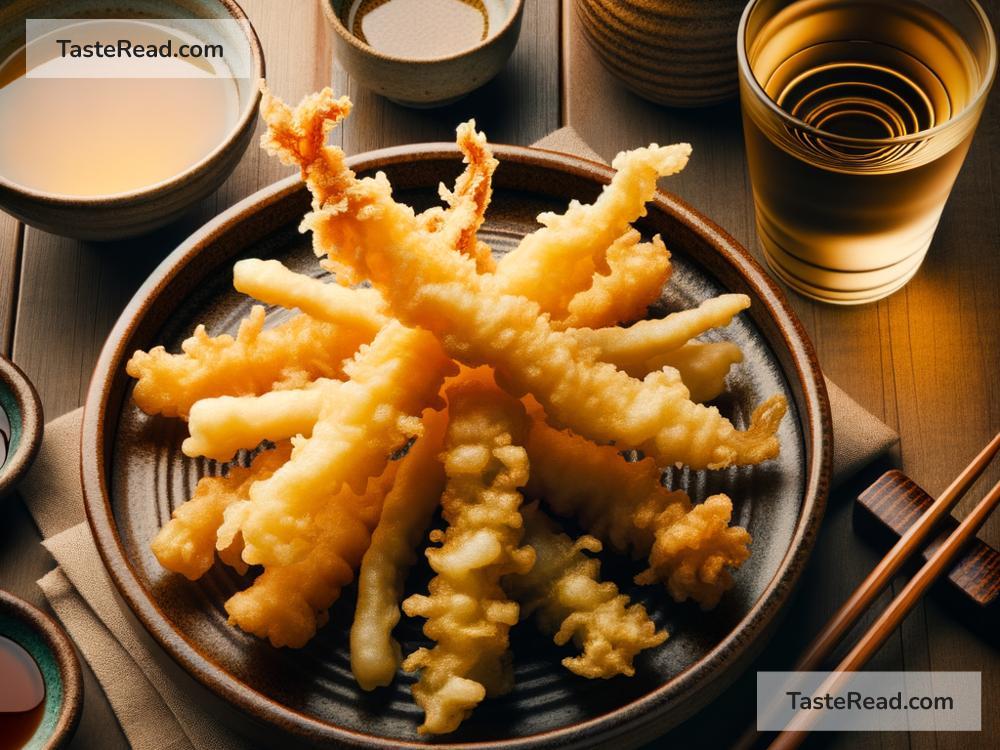Title: How the Japanese Tempura Became a Global Favorite
Have you ever sunk your teeth into a piece of light, crispy tempura? Whether it’s succulent shrimp or fresh vegetables encased in that lusciously golden batter, tempura is a delightful dish that has won hearts around the globe. But have you ever wondered how this Japanese delicacy climbed the ranks to become a worldwide favorite? Let’s dive into the fascinating journey of tempura.
Originating from Portugal to Flourishing in Japan
The story of tempura dates back to the mid-16th century when Portuguese missionaries and traders landed on the shores of Japan. Among many things they brought to Japan, was the method of deep-frying food. This cooking technique wasn’t common in Japan at the time. The term “tempura” itself is believed to originate from the Latin word “tempora,” referring to periods of time when Western Christians would avoid meat and opt for fish and vegetables instead.
As this cooking method was adopted and adapted by the Japanese, it gradually transformed. The Japanese chefs, with their inherent knack for perfection and balance, refined the batter and the frying process. The result was a lighter, less greasy form of fried food that perfectly complemented the subtleties of Japanese cuisine. Over the centuries, tempura became an integral part of Japanese food culture and was no longer seen as a foreign import but rather a traditional Japanese dish.
Tempura’s Evolution and Diversification
Originally, tempura was more about seafood owing to Japan’s rich bounty of the sea. However, over time, vegetables also found their prominent place in the tempura pot. Chefs started experimenting with various ingredients like sweet potato, eggplant, bell peppers, and shiso leaves, creating an array of flavors and textures.
The secret to the perfect tempura lies in the batter and the frying technique. The batter is a simple mix of cold water and wheat flour, sometimes with the addition of egg and baking soda to enhance its lightness and texture. Japanese chefs mastered the art of mixing the batter just enough to keep it lightly bound, ensuring the final product was airy, crispy, and not oily. The frying is done in sesame oil or a blend of oils, at a temperature that crisps the outside while keeping the inside tender.
Moving Beyond Japan
The global journey of tempura began as Japan opened its doors to the world in the late 19th and early 20th centuries. As people traveled, they took their cuisine with them, and tempura was no exception. It first charmed diners in neighboring Asian countries before making its way to the United States and beyond around mid-20th century.
The post-war boom saw a surge of interest in Asian, particularly Japanese culture and cuisine in the Western world. Tempura, with its appealing taste and texture, soon found its place in the heart of international cuisine. The growth of Japanese restaurants worldwide helped tempura’s popularity to soar even further.
Tempura Today: A Global Comfort Food
Today, tempura is cherished across the globe, from high-end Japanese restaurants to street food markets. It caters to a wide audience, appealing to those who prefer a lighter, delicate taste, as well as those who love their food crispy and fried. Its simplicity and versatility have made tempura a global comfort food. Whether it’s served atop a bowl of steaming rice, tucked into a bento box, or presented as an elegant appetizer, tempura continues to captivate food lovers worldwide.
Furthermore, tempura has not just remained a traditional dish; it has evolved into fusion cuisines. Chefs around the world experiment with the tempura technique using local ingredients and serving it with innovative dips and sauces, thus continually reinventing tempura and introducing it to new palates.
In conclusion, the journey of tempura from a foreign import in Japan to a beloved dish around the globe is a testament to the power of cultural exchange and adaptation. It is a dish that transcends borders, bringing people together over the shared love for something as simple yet profound as beautifully fried food. As tempura continues to evolve and adapt to local tastes and ingredients, it reinforces its position as a truly global favorite, proving that good food knows no boundaries. Whether you’re enjoying it in a bustling Tokyo eatery or a cozy restaurant halfway across the world, tempura is a dish that always feels like home.


